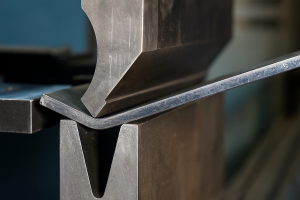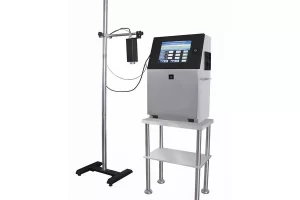
Sheet Metal Bending: A Complete Guide to Processes & Techniques
Release time:2025-08-14 Click:44Sheet metal bending is one of the most fundamental and widely used processes in the sheet metal fabrication industry. This process is vital in producing a variety of metal parts and components used across numerous industries, including automotive, aerospace, construction, and electronics. Bending allows manufacturers to shape metal sheets into different angles and forms, making it a crucial part of creating functional, durable, and precise parts.
In this article, we will provide a comprehensive overview of sheet metal bending, its importance, the various techniques involved, and why it plays such an essential role in modern manufacturing. We will also discuss the materials commonly used in sheet metal bending and some of the most common applications for this technique.
At its core, sheet metal bending involves the deformation of a sheet of metal around a straight axis, which causes the material to bend without breaking. This is achieved by applying force through a press brake or other bending equipment, which can either push, pull, or press the material into the desired shape.
The goal of sheet metal bending is to manipulate the metal into precise angles, such as 90 degrees, or more complex, custom angles, depending on the application. This process is often used to form different types of structural parts, enclosures, or brackets, and is used in everything from the production of car body panels to the construction of electrical enclosures.
Sheet metal bending is crucial because it enables manufacturers to create metal parts that are both functional and aesthetically pleasing. This technique provides flexibility in design, allowing engineers and designers to achieve the exact shape and strength they require for specific applications.
Here are a few reasons why sheet metal bending is so important:
Cost-Effective: Bending is a relatively inexpensive process when compared to other metalworking techniques like welding or casting, making it an attractive option for high-volume manufacturing.
Material Efficiency: By using sheet metal, manufacturers can create parts with less material waste, resulting in cost savings and environmental benefits.
Precision: With modern CNC (computer numerical control) technology, sheet metal bending allows for high precision and repeatability, ensuring that each part meets the required specifications.

The process of sheet metal bending can be broken down into several steps. Each step requires careful consideration of the material being used, the type of bending machine, and the desired result.
The first step in the bending process is selecting the right type of sheet metal. The material must be chosen based on its properties, such as strength, thickness, and flexibility. Common materials used for sheet metal bending include:
Steel: Known for its strength and durability, steel is used in a wide variety of applications, including construction and automotive parts.
Aluminum: Lightweight, corrosion-resistant, and easy to bend, aluminum is commonly used in the aerospace, automotive, and electronics industries.
Stainless Steel: This material offers excellent corrosion resistance, making it ideal for industries such as food processing and medical equipment.
Copper: Used for its excellent electrical conductivity, copper is often employed in electrical components and wiring.
Once the material is chosen, the next step is to prepare the bending machine. The most common machine used for sheet metal bending is the press brake, which uses a punch and die to apply force to the sheet metal. Depending on the complexity of the part, different dies and punches may be used to achieve the desired bend.
The sheet metal is placed between the punch and die, and pressure is applied to bend the metal at the desired angle. The force applied during this process is typically measured in tons, with larger machines capable of applying thousands of tons of pressure to bend thicker and more rigid materials.
After the bending process is completed, the part is inspected for accuracy and precision. Quality control is essential in ensuring that the bends are within the specified tolerances. In high-precision industries like aerospace or medical manufacturing, this step is particularly critical.
There are several bending techniques used in sheet metal fabrication, each suited to different applications and material types. Here are some of the most common techniques:
Air bending is one of the most commonly used bending techniques in sheet metal fabrication. In this process, the sheet metal is placed on a die, and force is applied through a punch that presses the metal down to form the desired angle. The metal does not make full contact with the die, allowing for more flexibility in the bending process.
In bottoming, the sheet metal is bent by applying pressure that forces it into full contact with the die. This technique is used for creating precise, consistent bends, and is typically used for applications requiring high accuracy and repeatability.
Coining is a more precise bending technique that involves using a punch to compress the sheet metal into a die, creating a sharp and clear bend. This process is typically used for parts that require tight tolerances and high detail.
Roll bending is used for forming metal sheets into circular or cylindrical shapes. This process uses a set of three rollers that bend the sheet metal as it passes through them. Roll bending is commonly used in applications such as pipe manufacturing and creating curved metal parts.
Stretch bending involves stretching the material as it is bent, which can help achieve more complex geometries. This technique is often used in the production of automotive body panels and other parts requiring curved, contoured shapes.
Sheet metal bending offers several key advantages that make it a preferred choice in manufacturing:
Compared to other methods of forming parts, sheet metal bending is often less expensive. The process is relatively quick and requires minimal setup, making it ideal for high-volume production runs.
Bending can be used to create parts with a wide range of shapes and sizes. Whether you need a simple angle or a complex, multi-faceted part, sheet metal bending offers flexibility in design.
Parts made from sheet metal are typically strong and durable. Bending metal allows for the creation of robust components that can withstand stress, making it ideal for industries such as automotive, aerospace, and construction.
Thanks to advances in CNC technology, sheet metal bending offers high precision and repeatability. This ensures that every part produced is consistent and meets the required tolerances.
Sheet metal bending is a quick and efficient process, allowing manufacturers to produce large quantities of parts in a short amount of time. This makes it an attractive option for industries that require rapid production and high output.
Sheet metal bending is used in a variety of industries to produce parts for different applications. Some of the most common uses include:
In the automotive industry, sheet metal bending is used to create body panels, brackets, and other structural components. Bending allows manufacturers to produce parts with the precise shapes and sizes required for a perfect fit.
In aerospace manufacturing, sheet metal bending is used to create parts such as fuselage panels, brackets, and frames. These parts need to meet stringent standards for strength and precision, and sheet metal bending offers a cost-effective way to produce these components.
The construction industry relies on sheet metal bending for a variety of applications, including HVAC systems, structural components, and roofing materials. Bending allows for the creation of strong, durable parts that are essential in building and infrastructure projects.
In electronics, sheet metal bending is used to create enclosures, casings, and brackets for devices such as computers, smartphones, and medical equipment. Bending is used to create parts that are both functional and aesthetically pleasing.
The medical industry uses sheet metal bending to create parts for medical devices and equipment, such as surgical tools, housings, and frames. Precision is critical in this industry, and bending provides a way to create the exact shapes and sizes needed.

At MexMach, we specialize in providing high-quality sheet metal fabrication services, including precision sheet metal bending. We use state-of-the-art machinery and advanced techniques to ensure that every part we produce meets the highest standards of quality, accuracy, and reliability.
Whether you need a single prototype or large-scale production, MexMach has the expertise and equipment to deliver cost-effective, high-quality sheet metal parts for your project. Our team works closely with clients to understand their unique requirements, ensuring that every part is designed and fabricated to meet their needs.
We pride ourselves on being a trusted partner in the manufacturing industry, providing custom sheet metal bending solutions that support your production goals. Contact us today to learn how MexMach can help with your sheet metal bending needs.
Sheet metal bending is a vital process in the manufacturing industry, offering numerous benefits such as cost-efficiency, flexibility, and precision. Whether it is used in the automotive, aerospace, construction, electronics, or medical industries, sheet metal bending plays an essential role in the creation of functional and durable parts.
At MexMach, we are committed to delivering high-quality sheet metal bending services that meet the exact needs of our clients. With advanced equipment, skilled professionals, and a focus on precision, we are ready to support your next project and help you achieve your production goals.